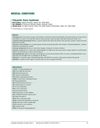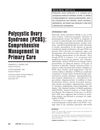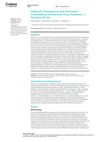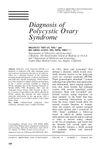Evaluation of Patients with Polycystic Ovarian Syndrome at a Tertiary Care Center
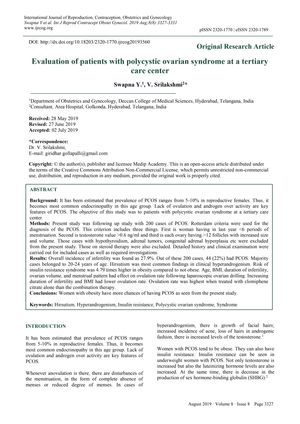
TLDR Obesity greatly affects polycystic ovarian syndrome, and losing weight should be the first treatment for obese patients to improve their chances of ovulation and pregnancy.
Between September 2011 and October 2012, a study evaluated 200 cases of polycystic ovarian syndrome (PCOS) using the Rotterdam criteria at a tertiary care center. The study found that 27.9% of the participants experienced infertility, with 22% having PCOS. The most common age group affected was 20-24 years, and hirsutism was the most frequent sign of hyperandrogenism. Obesity was linked to a 4.79 times higher risk of insulin resistance syndrome, and it was associated with lower ovulation rates after laparoscopic ovarian drilling. Clomiphene citrate alone had the highest ovulation rate. Menstrual irregularities were prevalent, with 53% experiencing oligomenorrhea. Acne and hirsutism were observed in 24% and 65% of cases, respectively. Insulin resistance was present in 32.7% of non-obese and 70% of obese PCOS patients. Clomiphene citrate treatment resulted in a 64% ovulation rate and a 9% pregnancy rate, with the addition of insulin sensitizers like metformin and pioglitazone increasing these rates. The study concluded that obesity significantly impacts PCOS and that weight reduction should be the first line of treatment in obese PCOS patients to improve ovulation and pregnancy rates. It also recommended that all women with infertility should be evaluated for PCOS, focusing on menstrual irregularities, hyperandrogenism, and insulin resistance, especially in obese individuals.


